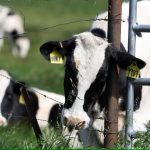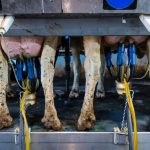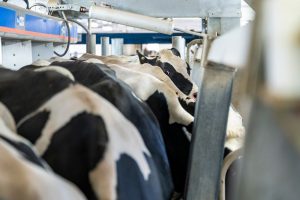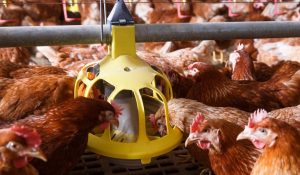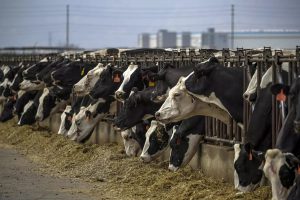
— More effective and efficient public messaging is the need of the hour
Less than a month ago, we published a pieceopens in a new tab or window suggesting that H5N1 bird flu could pose an even thornier health communications challenge than COVID-19.
We offered a three-point prescription for how the U.S. government agencies most responsible for overseeing the response to this public health challenge — FDA, CDC, and the U.S. Department of Agriculture (USDA) — might collaborate to speak about H5N1 with one voice, be transparent about how and when they would address the issue, and balance the paradoxical challenge of allaying fears while providing a realistic assessment of the risk to human health.
The Current H5N1 Situation
On May 10, HHS Secretary Xavier Becerra and USDA Secretary Tom Vilsack jointly announced nearly $200 millionopens in a new tab or window worth of new initiatives to address bird flu. Yet, in the weeks since, uncertainty surrounding the situation has only increased and things are not going too smoothly on the ground.
For one, farmers and farm state political leaders have resistedopens in a new tab or window what they see as federal encroachment, and dairy farmers have rejected the offer of personal protective equipment even if the government is footing the bill for it. On May 22, as resistance to control efforts rose, we learned of a second reported caseopens in a new tab or window of bird flu in a dairy worker in Michigan.
When they announced this “second” case of H5N1, the CDC continued to reassure Americansopens in a new tab or window that their health risk remained low. Shortly afterwards, news surfaced that H5N1 had been detected in beefopens in a new tab or window from the meat of a sickened dairy cow, which thankfully was not allowed to enter the food supply. And just last week, reports showed that a third human caseopens in a new tab or window had been detected.
An Uncoordinated Response
New funding notwithstanding, the CDC, FDA, and USDA have not succeeded in coordinating their response, much less their communication goals, either with each other or with state and local health departments.
For example, CDC agents rushed to get involved at the local farm level, while farmers pushed back on a response they thought should have been local, or at least driven by the USDA. Even though CDC and USDA insist they are working “hand in glove,opens in a new tab or window” many dairy farmers have been resistant.
Another issue stems from the fact that USDA and FDA sometimes have turf battlesopens in a new tab or window due to their overlapping jurisdictions but different missions. While USDA both regulates and promotes agriculture, FDA regulates food to protect human health.
This turf battle becomes evident when Scott Gottlieb, MD, a former FDA commissioner, says things likeopens in a new tab or window: “I think [USDA] should be doing more [with regard to the H5N1 outbreak].” Public displays of interagency warfare undoubtedly reduce public confidence in the government’s response to an outbreak.
We remain in the dark, and recent reports of H5N1 human outbreaks in southeast Asiaopens in a new tab or window should disquiet us further.
Taking Lessons From COVID
As the COVID pandemic slowed down, many of us touted transparent communication about medical and health-related uncertainty as a possible panacea for growing distrust of public health and medicine. But if we are honest with ourselves, we don’t really know exactly how we should be communicating about uncertainty.
It is also worth pointing out that good health communication should be based on good health communication research. In this context, health communicators are not comforted by the Fall 2023 decisionopens in a new tab or window of the NIH to “pause” (which ultimately meant cancel) what would have become its first dedicated health communication science and practice research program.
The Biden administration should reconsider this unfortunate decision. We need to invest real money in health communication research and evaluation now, with an emphasis on testing strategies that build bridges and help people make appropriate health decisions based on information that is inevitably in flux.
Sara Gorman, PhD, MPH,opens in a new tab or window is CEO of Critica and author of the forthcoming book, The Anatomy of Deception: Conspiracy Theories, Distrust, and Public Health in America. Kenneth H. Rabin, PhD, MA,opens in a new tab or window is a senior scholar at the City University of New York Graduate School of Public Health and Health Policy, and a co-author of Informing the People: A Public Affairs Handbook. Scott C. Ratzan, MD, MPA, MA,opens in a new tab or window is the founding editor of the Journal of Health Communication, distinguished lecturer at CUNY Graduate School of Public Health and Health Policy, and author of Mad Cow Crisis: Health and the Public Good. Gorman, Rabin, and Ratzan are all founding members of the Council for Quality Health Communicationopens in a new tab or window.
You can now read the most important #news on #eDairyNews #Whatsapp channels!!!
🇺🇸 eDairy News INGLÊS: https://whatsapp.com/channel/0029VaKsjzGDTkJyIN6hcP1K

